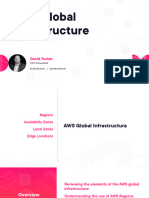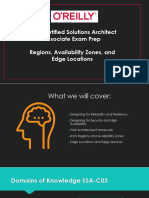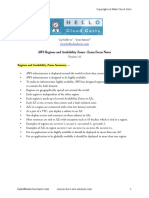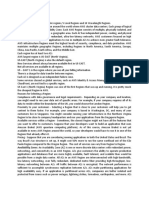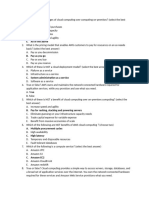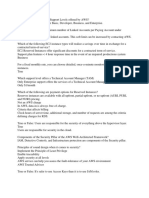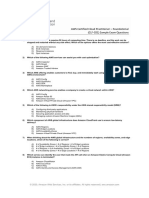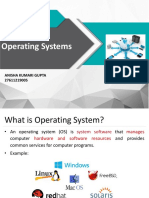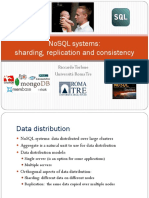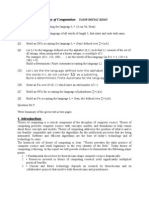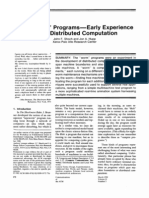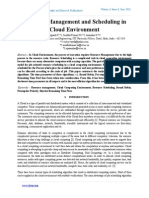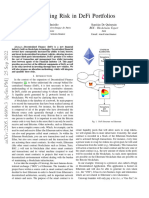0% found this document useful (0 votes)
66 views3 pagesAWS Module3
The document provides an overview of AWS Global Infrastructure, highlighting key components such as AWS Regions, Edge locations, and Availability Zones. It includes a series of questions and answers related to the functionality and characteristics of these components, emphasizing concepts like low-latency delivery, fault tolerance, and resource scalability. The answers clarify misconceptions and reinforce the importance of distributing resources across multiple availability zones.
Uploaded by
dummy.niaCopyright
© © All Rights Reserved
We take content rights seriously. If you suspect this is your content, claim it here.
Available Formats
Download as TXT, PDF, TXT or read online on Scribd
0% found this document useful (0 votes)
66 views3 pagesAWS Module3
The document provides an overview of AWS Global Infrastructure, highlighting key components such as AWS Regions, Edge locations, and Availability Zones. It includes a series of questions and answers related to the functionality and characteristics of these components, emphasizing concepts like low-latency delivery, fault tolerance, and resource scalability. The answers clarify misconceptions and reinforce the importance of distributing resources across multiple availability zones.
Uploaded by
dummy.niaCopyright
© © All Rights Reserved
We take content rights seriously. If you suspect this is your content, claim it here.
Available Formats
Download as TXT, PDF, TXT or read online on Scribd
/ 3






